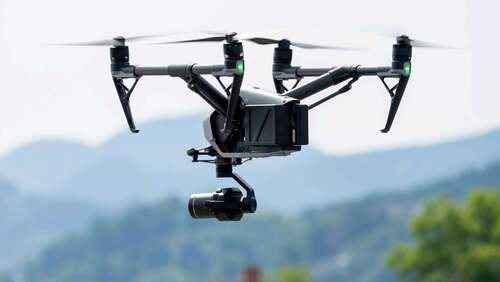
The most important thing White Knight Labs co-founder and cyber security expert Greg Hatcher told us was that no drone user is safe from having their equipment hacked. Not only do drones have weaknesses that can be exploited by malicious actors, but the hacker doesn’t even need physical access to the device. “Drone hacking is a real threat all drone users should consider,” Hatcher says. “Drones can be remotely hacked, with hackers taking over the drone’s controls without needing physical access. They do this by intercepting the signal between the operator and the drone.”
Hatcher refers to a hack in which attackers use a radio frequency analyzer to imitate the signal coming from the drone’s real controller, hijacking it. What’s most unnerving about these attacks is that they can be carried out from up to a mile away, according to Kaspersky. Another common hack that can be carried out remotely is GPS spoofing, a scheme in which an uncrewed aircraft is fed fake GPS coordinates, causing it to travel off course. Using either technique, a hacker might be able to fly your drone to their location to steal it or use it to cause chaos by crashing the aircraft into cars, buildings, or other drones.
Lastly, the attackers might not bother taking control of the drone itself. Instead, they might be more interested in intercepting the video signal from its attached camera on a photography drone or information from other sensors. In that case, you’ll still have your drone, but attackers might be spying on you without your knowledge.

